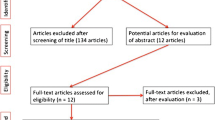Abstract
Purpose of Review
With the emphasis on quality standards when determining reimbursements rates, patient reported outcomes are now of particular interest to clinicians. This review addresses health-related quality of life (HRQOL) detriments that have been studied in patients with stone disease.
Recent Findings
Several instruments been validated for use in stone formers. Previously, generic instruments revealed decreased HRQOL in urolithiasis patients. Recently, a disease-specific tool has been developed and has provided more insight into the specific symptoms that negatively affect the patient experience.
Summary
Evidence now reveals lower HRQOL in both symptomatic and asymptomatic patients with calculi, as well as varying determinants after certain interventions. Disease-specific tools have been shown to be more sensitive to urologic-related complaints. These findings should be considered in management decisions to allow for patient-centered care. Further application and standardization of these assessment tools into prospective studies may have value in refining current treatment guidelines.
Similar content being viewed by others
References
Papers of particular interest, published recently, have been highlighted as: • Of importance, •• Of major importance
Scales CD Jr, Smith AC, Hanley JM, Saigal CS. Prevalence of kidney stones in the United States. Eur Urol. 2012;62:160–5. https://doi.org/10.1016/j.eururo.2012.03.052.
Johnson CM, Wilson DM, O'Fallon WM, Malek RS, Kurland LT. Renal stone epidemiology: a 25-year study in Rochester, Minnesota. Kidney Int. 1979;16:624–31. https://doi.org/10.1038/ki.1979.173.
Rule AD, Lieske JC, Li X, Melton LJ 3rd, Krambeck AE, Bergstralh EJ. The ROKS nomogram for predicting a second symptomatic stone episode. J Am Soc Nephrol. 2014;25:2878–86. https://doi.org/10.1681/asn.2013091011.
Pearle MS, Calhoun EA, Curhan GC. Urologic diseases in America project: urolithiasis. J Urol. 2005;173:848–57. https://doi.org/10.1097/01.ju.0000152082.14384.d7.
Lavallee DC, Chenok KE, Love RM, Peterson C, Holve E, Segal CD, et al. Incorporating patient-reported outcomes into health care to engage patients and enhance care. Health Aff. 2016;35:575–82. https://doi.org/10.1377/hlthaff.2015.1362.
Ferrans CE, Zerwic JJ, Wilbur JE, Larson JL. Conceptual model of health-related quality of life. J Nurs Scholarsh. 2005;37:336–42.
Penniston KL, Sninsky BC, Nakada SY. Preliminary evidence of decreased disease-specific health-related quality of life in asymptomatic stone patients. J Endourol. 2016;30:S42–5. https://doi.org/10.1089/end.2016.0074.
Preminger GM, Tiselius HG, Assimos DG, Alken P, Buck AC, Gallucci M, et al. 2007 guideline for the management of ureteral calculi. J Urol. 2007;178:2418–34.
Patrick DL, Erickson P. Assessing health-related quality of life for clinical decision making. In: Walker SR, Rosser RM, editors. Quality of life: assessment and application. Lancaster: MTP Press; 1988. p. 9.
Patrick DL, Deyo RA. Generic and Disease-specific measures in assessing health status and quality of life. Med Care. 1989;27:S217–30.
Coons SJ, Rao S, Keininger DL, Hays RD. A comparative review of generic quality-of-life instruments. PharmacoEconomics. 2000;17(1):13–35.
Devlin NJ, Brooks R. EQ-5D and the EuroQol Group: past, present and future. Appl Health Econ Health Policy. 2017;15:127–37. https://doi.org/10.1007/s40258-017-0310-5.
Cella D, Riley W, Stone A, Rothrock N, Reeve B, Yount S, et al. PROMIS Cooperative Group. The Patient-Reported Outcomes Measurement Information ystem (PROMIS) developed and tested its first wave of adult self-reported health outcome item banks: 2005–2008. J Clin Epidemiol. 2010;63:1179–94. https://doi.org/10.1016/j.jclinepi.2010.04.011.
Jones RS, Stukenborg GJ. Patient-Reported Outcomes Measurement Information System (PROMIS) use in surgical care: a scoping study. J Am Coll Surg. 2017;224:245–254.e1. https://doi.org/10.1016/j.jamcollsurg.2016.11.015.
•• Penniston KL, Antonelli JA, Viprakasit DP, Averch TD, Sivalingam S, Sur RL, et al. Validation and reliability of the Wisconsin Stone Quality of Life Questionnaire. J Urol. 2017;197:1280–8. https://doi.org/10.1016/j.juro.2016.11.097. This study validated the WISQOL survey, the first disease-specific tool , allowing future investigators to detect HRQOL detriments specific to stone disease.
Penniston KL, Nakada SY. Development of an instrument to assess the health related quality of life of kidney stone formers. J Urol. 2013;189:921–30. https://doi.org/10.1016/j.juro.2012.08.247.
Penniston KL, Nakada SY. Health related quality of life differs between male and female stone formers. J Urol. 2007;178:2435–40. https://doi.org/10.1016/j.juro.2007.08.009.
Bensalah K, Tuncel A, Gupta A, Raman JD, Pearle MS, Lotan Y. Determinants of quality of life for patients with kidney stones. J Urol. 2008;179:2238–43. https://doi.org/10.1016/j.juro.2008.01.116.
Donnally CJ 3rd, Gupta A, Bensalah K, Tuncel A, Raman J, Pearle MS, et al. Longitudinal evaluation of the SF-36 quality of life questionnaire in patients with kidney stones. Urol Res. 2011;39:141–6. https://doi.org/10.1007/s00240-010-0313-2.
Jiang H, Huang D, Yao S, Liu S. Improving drainage after percutaneous nephrolithotomy based on health-related quality of life: a prospective randomized study. J Endourol. 2017;31:1131–8. https://doi.org/10.1089/end.2017.0444.
• Borofsky MS, Lane GI, Neises SM, Portis AJ. Patient-Reported Outcomes Measurement System (PROMIS®) for patients with urolithiasis: initial report. J Urol. 2017;198(5):1091–7. https://doi.org/10.1016/j.juro.2017.05.080. This study was the first to utilize the PROMIS pain scale measures, which have the advantage to be compared with population norms, assessing HRQOL detriments at various stages of the disease process.
Bryant M, Angell J, Tu H, Goodman M, Pattaras J, Ogan K. Health related quality of life for stone formers. J Urol. 2012;188:436–40. https://doi.org/10.1016/j.juro.2012.04.015.
Joshi HB, Newns N, Stainthorpe A, MacDonagh RP, Keeley FX Jr, Timoney AG. Ureteral Stent Symptom Questionnaire: development and validation of a multidimensional quality of life measure. J Urol. 2003;169(3):1060–4. https://doi.org/10.1097/01.ju.0000049198.53424.1d.
Author information
Authors and Affiliations
Corresponding author
Ethics declarations
Conflict of Interest
Ruchika Talwar declares no potential conflicts of interest.
Justin Ziemba reports personal fees from Visible Health, outside the submitted work.
Human and Animal Rights and Informed Consent
This article does not contain any studies with human or animal subjects performed by any of the authors.
Additional information
This article is part of the Topical Collection on Endourology
Rights and permissions
About this article
Cite this article
Talwar, R., Ziemba, J. Validated Methods of Assessing Quality of Life in Stone Disease. Curr Urol Rep 19, 25 (2018). https://doi.org/10.1007/s11934-018-0776-1
Published:
DOI: https://doi.org/10.1007/s11934-018-0776-1




